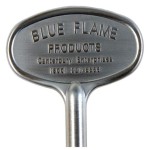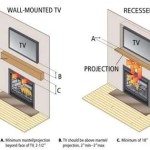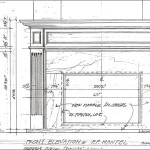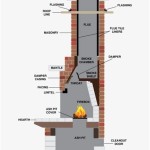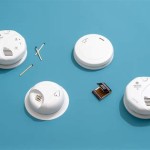```html
Freestanding Fireplace Design Ideas
Freestanding fireplaces offer a compelling alternative to traditional built-in units, providing both aesthetic appeal and practical heating solutions. Their versatility allows for placement in various locations within a room, becoming a focal point while circumventing the structural limitations often associated with conventional fireplace installations. The design possibilities are extensive, encompassing a wide range of styles, materials, and functionalities to complement diverse interior design schemes.
The selection of a freestanding fireplace necessitates careful consideration of several factors, including the overall style of the room, the desired heat output, and the fuel type preference. Modern homes might benefit from sleek, contemporary designs featuring clean lines and minimalist aesthetics. Rustic environments, conversely, may be better suited to cast iron or stone fireplaces that evoke a sense of warmth and tradition. By exploring different design options, homeowners can effectively integrate a freestanding fireplace into their living space, enhancing both its visual appeal and functionality.
Choosing a Style: Matching Aesthetics to Functionality
The style of a freestanding fireplace should harmonize with the existing décor of the room. Contemporary styles often feature geometric shapes, stainless steel accents, and tempered glass panels. These units emphasize simplicity and elegance, blending seamlessly into modern interiors. Traditional styles, on the other hand, may incorporate ornate details, such as decorative carvings, cast iron embellishments, and brick or stone surrounds. These fireplaces are designed to replicate the charm and character of classic hearths, creating a cozy and inviting atmosphere.
Beyond aesthetics, the design should also align with the intended function of the fireplace. If the primary goal is to provide supplementary heating, models with high heat output and efficient combustion systems are essential. For purely decorative purposes, fireplaces with visually appealing flame displays and unique designs may be more suitable. Prioritizing both form and function ensures that the freestanding fireplace not only enhances the room's aesthetics but also serves its intended purpose effectively.
Furthermore, think about the visual weight of the fireplace. A large, imposing fireplace might overwhelm a smaller room, while a small, understated fireplace could get lost in a larger, more spacious area. Scaling the fireplace appropriately to the dimensions of the room is crucial for achieving a balanced and harmonious design. Color also plays a significant role; a dark-colored fireplace can create a dramatic focal point, while a lighter-colored fireplace can blend seamlessly into the background.
Material Considerations: Durability and Visual Impact
The materials used in the construction of a freestanding fireplace significantly impact its durability, performance, and visual appearance. Cast iron is a popular choice due to its excellent heat retention properties and robust construction. It can withstand high temperatures and provide consistent heat output over extended periods. Stone fireplaces, whether natural or manufactured, offer a timeless elegance and can be incorporated into various design styles, from rustic to contemporary. They are also known for their durability and resistance to wear and tear.
Steel is another common material, particularly in modern designs. It is lightweight, durable, and can be easily shaped into sleek, geometric forms. Stainless steel provides a modern and industrial aesthetic and is resistant to corrosion. The choice of materials should also consider the maintenance requirements. Some materials, such as cast iron, may require periodic cleaning and maintenance to prevent rust or corrosion. Stone fireplaces may need to be sealed to protect them from staining. Selecting materials that are both aesthetically pleasing and easy to maintain ensures the longevity and beauty of the fireplace.
The hearth material surrounding the fireplace is also a crucial element. Options include tile, stone, brick, and metal. The hearth serves as a protective barrier, preventing sparks and embers from damaging the surrounding floor. It also contributes to the overall aesthetic of the fireplace, complementing the design and materials used in its construction. Consider the texture and color of the hearth material to create a cohesive and visually appealing design.
Fuel Types and Venting Options
Freestanding fireplaces are available in various fuel types, each offering distinct advantages and disadvantages. Wood-burning fireplaces provide the traditional ambiance and crackling sound of a real fire, but they require a chimney for venting and can produce smoke and ash. Gas fireplaces offer convenience and ease of use, with the ability to ignite and extinguish the flame with the flip of a switch. They can be vented through a chimney or with a direct-vent system, which exhausts fumes directly through an exterior wall.
Electric fireplaces are another convenient option, requiring no venting and offering a realistic flame effect. They are easy to install and operate, making them suitable for apartments and homes without existing chimneys. Ethanol fireplaces burn clean-burning ethanol fuel, producing a real flame without the need for venting. They are portable and can be placed in various locations, but they may not provide as much heat as other fuel types.
The choice of fuel type depends on individual preferences, budget, and environmental considerations. Wood-burning fireplaces require a readily available source of firewood and regular cleaning. Gas fireplaces require a connection to a natural gas or propane line. Electric fireplaces require only an electrical outlet. Ethanol fireplaces require a supply of ethanol fuel. Consider the long-term costs and maintenance requirements associated with each fuel type before making a decision.
Proper venting is essential for all fuel types except electric and ethanol fireplaces. Wood-burning and gas fireplaces require a chimney or direct-vent system to safely exhaust fumes and combustion byproducts. Ensure that the venting system is properly installed and maintained to prevent carbon monoxide poisoning and other hazards. Consult with a qualified professional to determine the appropriate venting solution for your chosen fireplace.
```
280 Freestanding Fireplaces Ideas In 2024 Fireplace Wood Stove Burning

Just 7 Scandinavian Fireplaces That You Ll Want To Curl Up Next Hunker Wood Burning Stoves Living Room Freestanding Fireplace

How To Decorate Around A Freestanding Stove 5 Ideas Fine Home Lamps

Freestanding Fireplace Decoración De Unas Estufas Hogar Estufa Leña

10 Fireplace Designs That Will Give Your Home A Warm Inviting Glow Beautiful

Hail The Queen Of Hygge Midcentury Modern Freestanding Fireplace Ashley Claire Real Estate Benchmark Realty

50 Stylish Fireplace Ideas To Boost Your Home S Value

4 Fireplace Hearth Ideas Arada Stoves

Freestanding Wood Burning Stoves With Versatile Designs

Fireplace Design Ideas For Your Home Designcafe
Related Posts


